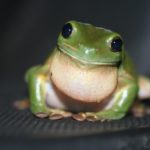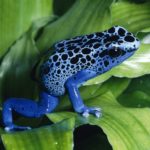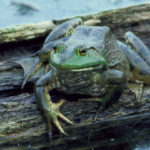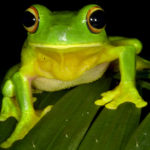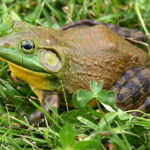Facts about frogs
 One of the most amazing amphibians on the earth is the frog. These representatives of the fauna do not have any peculiarities wet, slippery and cold, they rather repel than attract our attention. However, if you take a closer look at these amphibians, you can learn a lot about them.
One of the most amazing amphibians on the earth is the frog. These representatives of the fauna do not have any peculiarities wet, slippery and cold, they rather repel than attract our attention. However, if you take a closer look at these amphibians, you can learn a lot about them.
- In total, of the described above 5000 species of amphibians, frogs make up almost 88%.
- The kvaks, toads and frogs are representatives of three different species of the amphibian class.
- The largest frog on earth is the Goliath frog, the weight of some individuals of this species is more than three kilograms, and the length is more than 90 centimeters. These frogs are able to overcome three meters in one jump.
- The smallest frog living on our planet lives on the cube, its “growth” is only nine millimeters.
- No less interesting is the fact that frogs have a truly unique vision, thanks to a special device of the eyes, they can simultaneously look in different directions – up, sideways and forward.
- Another of the most interesting moments in the life of frogs is that they do not close the eye for a long time even during sleep.
- It is also surprising that the wet and slippery skin of amphibians has high disinfecting and antibacterial properties. This feature was used quite often by our ancestors and thrown into milk to prevent it from souring.
- Among the frogs there are also really dangerous species, for example, frogs “kokoi” are rightly considered one of the most poisonous creatures on our planet.
- In nature, there is a species of frogs, whose cubs are larger than their parents. The size of an adult of this species does not exceed six centimeters, but their tadpoles can be called real giants, since their “growth” reaches as much as twenty-five centimeters, and with age they simply decrease.
- Very few people know, but the number of males of Amazonian frogs-necrophiles is 10 times higher than the number of females of representatives of this species. The males of these frogs during the mating season fertilize not only the eggs of living females, but also the dead. Scientists called this phenomenon “functional necrophilia.”



